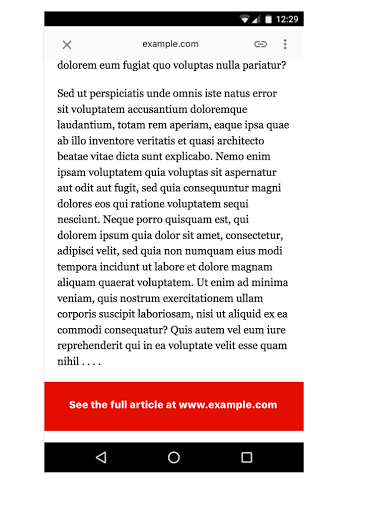Thursday, November 16, 2017
To improve our users' experience with AMP results, we are making changes to how we enforce our policy on content parity with AMP. Starting Feb 1, 2018, the policy requires that the AMP page content be comparable to the (original) canonical page content. AMP is not a ranking signal and there is no change in terms of the ranking policy with respect to AMP.
The open source accelerated mobile pages project (AMP) launched in 2015 and has seen tremendous growth with over 25M domains having implemented the AMP format. This rapid progress comes with a sense of responsibility of ensuring that our users continue to have a great content consumption experience that ultimately leads to more engagement with publisher content.
In some cases, webmasters publish two versions of their content: a canonical page that is not based on AMP and an AMP page. In the ideal scenario, both these pages have equivalent content leading the user to get the same content but with a faster and smoother experience via AMP. However, in some cases the content on the AMP page does not match the content on its original (canonical) page.
In a small number of cases, AMP pages are used as teaser pages which create a particularly bad user experience since they only contain minimal content. In these instances, users have to click twice to get to the real content. Below is an example of how this may look like: a brief text of the main article and then asking the user to click to visit another page to complete reading the article.

AMP was introduced to dramatically improve the performance of the web and deliver a fast, consistent content consumption experience. In keeping with this goal, we'll be enforcing the requirement of close parity between AMP and canonical page, for pages that wish to be shown in Google Search as AMPs.
Where we find that an AMP page doesn't contain the same critical content as its non-AMP equivalent, we will direct our users to the non-AMP page. This does not affect Search ranking. However, these pages will not be considered for Search features that require AMP, such as the Top Stories carousel with AMP. Additionally, we will notify the webmaster via Search console as a manual action message and give the publisher the opportunity to fix the issue before its AMP page can be served again. The AMP open source website has several helpful guides to help produce fast, beautiful and high-performing AMP pages.
We hope this change encourages webmasters to maintain content parity between the canonical and AMP equivalent. This will lead to better experience on your site and ultimately happier users.
